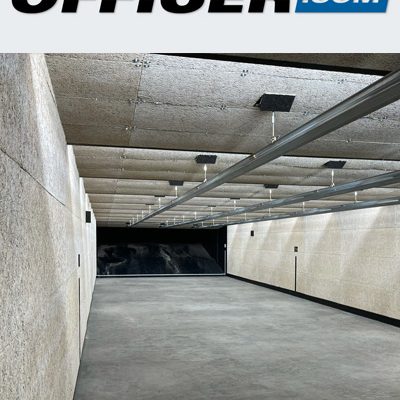
Indoor Range Design Considerations
There is far more involved in range design than simply stopping the bullets.
by Lt. Frank Borelli (ret)
If you’ve ever walked into an indoor shooting range, you may or may not have noticed the materials and design. Most of the time, if you take notice, you’ll see such design features as the bullet stop(s), target mounting and moving system, adjustable lights and maybe some fans. The space where you lay out your weapon(s), extra ammo and targets is usually the focus of your attention. Virtually every indoor range has an “airlock” system with a small vestibule. There’s a door to the range and a door to whatever indoor space it’s attached to. In some cases the doors are designed so that only one can be opened at a time. This prevents both from being opened at the same time and the noise of gunfire getting out. All of this is usually taken for granted by the shooter. However, if you’re the person responsible for the range from conception to construction and through use, you have to know a lot more about range design. To gain a bit more information about such, we talked to a few subject matter experts in the industry.The indoor range at the Tyndall Air Force Base in Florida is seen.
